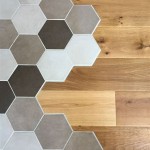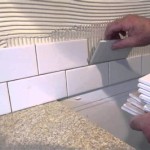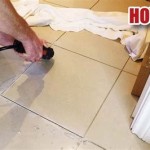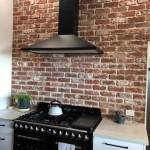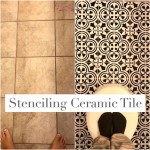Disadvantages of Cork Floor Tiles
Cork flooring has gained popularity as an environmentally friendly and comfortable flooring option for residential and commercial spaces. Derived from the bark of the cork oak tree, it offers unique benefits such as natural insulation, sound absorption, and a pleasant underfoot feel. However, like any flooring material, cork also has its drawbacks. Understanding these disadvantages is crucial for making an informed decision about whether cork flooring is suitable for a particular application.
The following sections will explore the key disadvantages of cork floor tiles, detailing their susceptibility to damage, maintenance requirements, cost considerations, and potential limitations in certain environments. These factors should be carefully considered alongside the advantages of cork before committing to this flooring option.
Susceptibility to Damage and Wear
One of the primary concerns associated with cork flooring is its relative softness compared to other flooring materials like hardwood or tile. This characteristic, while contributing to its comfortable feel, also makes it more susceptible to damage from various sources. Understanding the types of damage cork floors are prone to and how to mitigate them is essential for ensuring their longevity.
Denting and Indentation: Cork is a naturally resilient material, meaning it can compress and recover to some extent. However, prolonged exposure to heavy furniture or sharp objects can lead to permanent dents and indentations. The weight of a large sofa, a table leg without felt pads, or the impact of a dropped object can leave visible marks on the surface of the cork. While some minor indentations may gradually disappear over time, deeper marks are likely to remain. This is particularly problematic in high-traffic areas or spaces where heavy items are frequently moved.
Scratching: Similarly, cork floors are susceptible to scratching. Everyday activities such as walking with shoes, dragging furniture, or pet claws can easily create scratches on the surface. While a durable finish can provide some protection, it is not impervious to damage. Over time, a buildup of scratches can dull the appearance of the floor and make it look worn. The visibility of scratches also depends on the color and pattern of the cork. Darker cork floors tend to show scratches more prominently than lighter-colored options.
Water Damage: Cork is a porous material, meaning it can absorb water. While modern cork flooring often has a protective sealant to prevent water penetration, prolonged exposure to moisture can still cause damage. Spills should be cleaned up promptly to prevent the water from seeping into the cork. Areas with high humidity or frequent spills, such as bathrooms or kitchens, are more prone to water damage. If water penetrates the cork, it can cause swelling, discoloration, and even mold growth. In severe cases, the affected tiles may need to be replaced.
Fading: Exposure to direct sunlight can cause cork flooring to fade over time. The UV rays can break down the pigments in the cork, leading to a change in color. This fading can be uneven if some areas of the floor are more exposed to sunlight than others, resulting in a patchy or discolored appearance. Using curtains, blinds, or UV-resistant window films can help to minimize fading. Regular refinishing can also help to restore the color of the floor.
Maintenance Requirements
Maintaining cork flooring properly is crucial for preserving its appearance and prolonging its lifespan. While cork is relatively easy to clean, it requires specific care routines to prevent damage and maintain its protective finish. Neglecting these maintenance requirements can lead to premature wear and the need for costly repairs or replacements.
Regular Cleaning: Regular cleaning is essential for removing dirt, dust, and debris that can scratch or damage the surface of the cork. Sweeping or vacuuming with a soft brush attachment should be done frequently, ideally daily in high-traffic areas. Avoid using vacuums with beater bars, as these can scratch the floor. For more thorough cleaning, damp mopping with a mild, pH-neutral cleaner specifically designed for cork flooring is recommended. Avoid using harsh chemicals, abrasive cleaners, or excessive amounts of water, as these can damage the finish and penetrate the cork.
Sealing and Refinishing: Depending on the type of cork flooring and the level of traffic, periodic sealing or refinishing may be necessary. Applying a sealant creates a protective layer that helps to prevent water damage, stains, and scratches. The frequency of sealing depends on the manufacturer's recommendations and the usage of the floor. Refinishing involves sanding down the existing finish and applying a new coat of sealant. This can help to restore the appearance of the floor and remove scratches or imperfections. Refinishing should be done by a professional to ensure a smooth and even finish.
Preventative Measures: Taking preventative measures can significantly reduce the need for extensive cleaning and repairs. Using mats at entrances can help to trap dirt and debris before they are tracked onto the floor. Placing felt pads under furniture legs can prevent scratches and indentations. Avoiding wearing shoes with high heels or cleats on the cork floor can also help to minimize damage. Promptly cleaning up spills and stains can prevent them from penetrating the cork and causing permanent discoloration. These simple steps can significantly extend the lifespan of the cork flooring.
Specific Product Requirements: It is important to follow the manufacturer's specific recommendations for cleaning and maintaining the particular type of cork flooring installed. Different finishes and constructions may require different care routines. Using the wrong cleaning products or techniques can damage the floor and void the warranty. Consulting with a flooring professional can help to ensure that the appropriate maintenance procedures are followed.
Cost Considerations
While cork flooring can be competitively priced compared to some other flooring options, the overall cost can vary significantly depending on several factors. These include the quality of the cork, the installation method, and the need for professional installation. Understanding these cost considerations is crucial for budgeting and determining whether cork flooring is a financially viable option.
Material Costs: The cost of cork floor tiles can range from moderate to high, depending on the thickness, density, and finish. Higher-quality cork tiles, such as those with a thicker wear layer or a more durable finish, will typically cost more. The pattern and color of the cork can also affect the price, with more intricate designs or rare colors commanding a premium. Floating cork floors, which are easier to install, may be less expensive than glue-down tiles, but they may also be less durable. It is important to compare prices from different suppliers and consider the long-term value of the flooring when making a decision.
Installation Costs: The cost of installation can vary depending on the complexity of the project and whether professional installation is required. Floating cork floors can be installed by experienced DIYers, but glue-down tiles typically require professional installation to ensure proper adhesion and a smooth, even surface. Professional installation can add significantly to the overall cost, but it can also help to ensure that the floor is installed correctly and will last for many years. Factors such as the size of the room, the condition of the subfloor, and the presence of obstacles can also affect the installation cost.
Maintenance Costs: The ongoing maintenance costs of cork flooring should also be considered. While routine cleaning is relatively inexpensive, periodic sealing or refinishing can add to the overall cost. The frequency of sealing or refinishing depends on the level of traffic and the care taken to maintain the floor. Budgeting for these maintenance costs can help to avoid unexpected expenses in the future.
Repair Costs: Despite proper maintenance, damage to cork flooring can occur. Repairing damaged tiles can be costly, especially if the damage is extensive or requires professional repair. Replacing individual tiles can be challenging, as it can be difficult to match the color and pattern of the existing floor, particularly if it has faded over time. It is wise to keep some extra tiles on hand for future repairs.
Environmental Limitations
While cork is generally considered an environmentally friendly material, there are certain environmental limitations that should be considered. These limitations relate to moisture sensitivity and the manufacturing processes involved.
High Humidity Environments: Cork flooring is not ideally suited for environments with consistently high humidity levels. As a porous material, cork can absorb moisture from the air, leading to swelling, warping, and the potential for mold growth. In bathrooms, laundry rooms, or basements with inadequate ventilation, cork flooring may deteriorate rapidly. It is crucial to ensure proper ventilation and moisture control in these areas before installing cork flooring. Using dehumidifiers can help to reduce humidity levels and protect the floor.
Manufacturing Processes: While cork harvesting is generally considered sustainable, the manufacturing processes involved in creating cork flooring can have environmental impacts. These processes may involve the use of adhesives, sealants, and other chemicals that can release volatile organic compounds (VOCs). Choosing low-VOC products and ensuring proper ventilation during installation can help to minimize these impacts. Also, consider the transportation distances involved in sourcing the cork, as this can contribute to carbon emissions.
Subfloor Preparation: The condition of the subfloor beneath the cork flooring can also affect its performance. A damp or uneven subfloor can lead to problems such as moisture damage, uneven wear, and premature failure. It is essential to ensure that the subfloor is dry, level, and properly prepared before installing cork flooring. This may involve repairing cracks, leveling the surface, and applying a moisture barrier.
Recyclability: The recyclability of cork flooring at the end of its lifespan is another factor to consider. While cork itself is a natural and biodegradable material, the adhesives, sealants, and other components used in cork flooring may not be recyclable. Check with the manufacturer to determine whether the flooring can be recycled or repurposed at the end of its useful life.

Cork Flooring Pros And Cons Is It The Right Choice For You

Advantages Disadvantages Of Cork Flooring Floorings

Advantages Disadvantages Of Cork Flooring Floorings

Disadvantages Of Cork Flooring 8211 Learn More From And Its Properties Avso

Cork Flooring Guide Specifics Pros Cons Fantastic Handyman Au

The Pros And Cons Of Cork Flooring Floorings

Disadvantages Of Cork Flooring 8211 Learn More From And Its Properties Avso

Advantages Disadvantages Of Cork Flooring Floorings

The Pros And Cons Of Cork Flooring 2024 Today S Homeowner

Cork Flooring Ultimate Guide Part Ii
Related Posts

